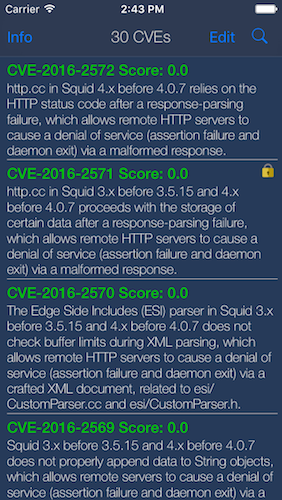CVEMonitor is a free (and ad free) iOS app that provides a convenient way to keep an eye on the issuance of new CVEs. Pulling down on and releasing the main table view will refresh the data fetching the latest CVE data feed. CVE data is stored onboard the app (up to 5000 entries) for convenient review. This information is published by Mitre Corporation and provided free as a publicly accessible data feed. CVE is a registered trademark of the Mitre Corporation.
Main table view CVE summary listing. Shows the CVE ID number, the color-coded CVSS score and the summary text. Selecting the CVE entry will show the detail view with all of the CVE feed information.
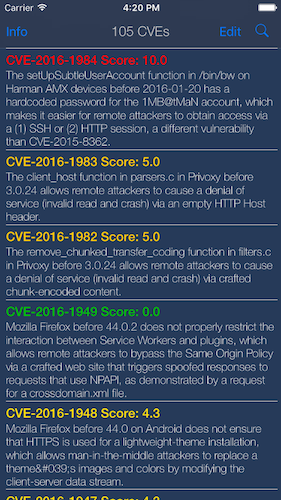
Detail view of the selected CVE. Shows all of the information published in the feed. Selecting the link to cvedetails.com displays the web page as shown below. Note that this information can change as the CVE is further evaluated. This can occur several days after the initial publication date.
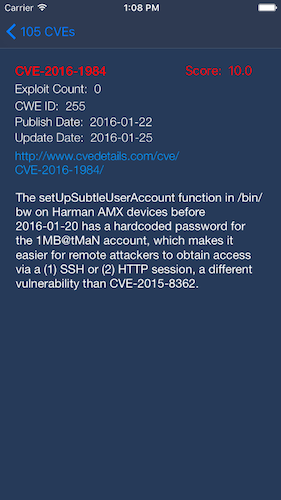
The CVE Details web page. This is the full web page for the CVE at http://www.cvedetails.com.
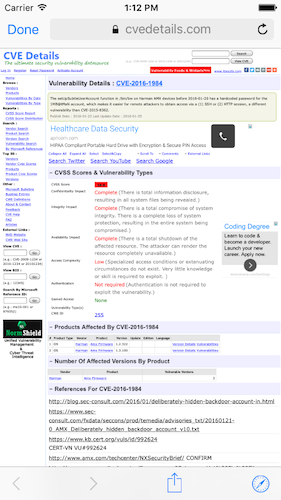
The app info page. Provides summary information such as the total number of CVE records in the app's database, the date-time and results of last update and the number of locked entries.
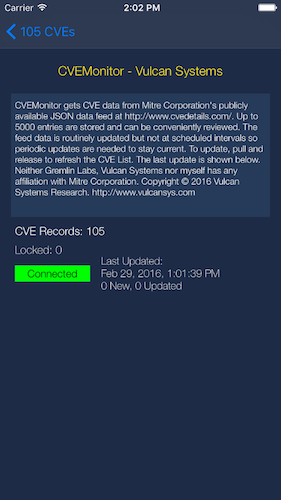
There are three easy ways to search for CVEs of interest. By the CVE ID number, by CVSS Score and by searching for text in the Summary data. This shows searching by CVE Number.
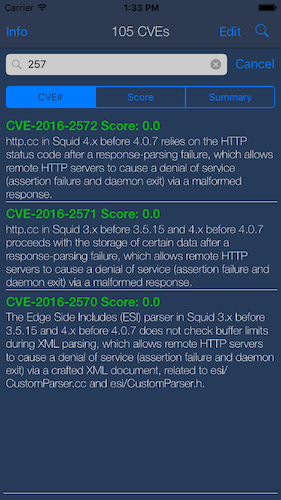
Searching by CVSS Score. For instance, to see the most critical CVEs, search for 10.0.
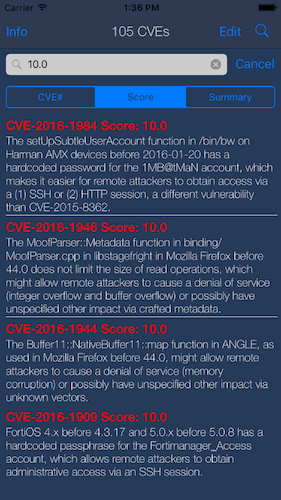
Searching for specific text in the summary description. In this example we search for CVEs regarding Cisco products.
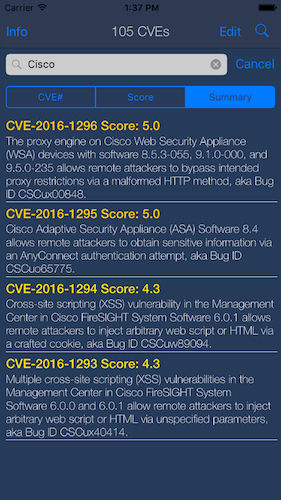
HTML entities in the feed data shows up in the text as can be seen in this example. To see the text with the entities decoded, go to the Detail View and tap the Decode Entities button. They aren't automatically decoded as the entity may actually be part of the descriptive text.
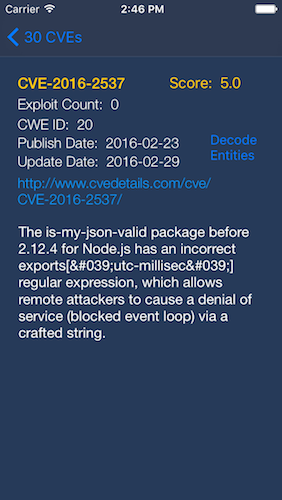
When HTML entities are decoded, the text is "cleaned up" and easier to read. The original text can be re-displayed by pressing the Show Original button.
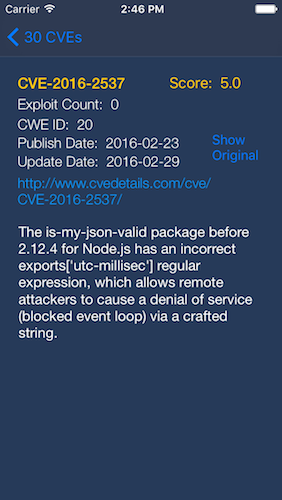
The oldest CVEs will be deleted when the maximum number (5000) is reached and new CVEs are fetched. To lock a CVE so that it won't be deleted, press and hold (where you see the lock between the CVE ID and CVSS Score) on the Detail View until the lock icon appears. To unlock a locked CVE, just press and hold on the lock icon until it disappears.
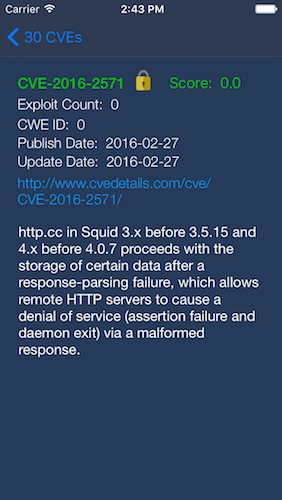
Locked CVEs will also have a lock icon on the Main Table view.
